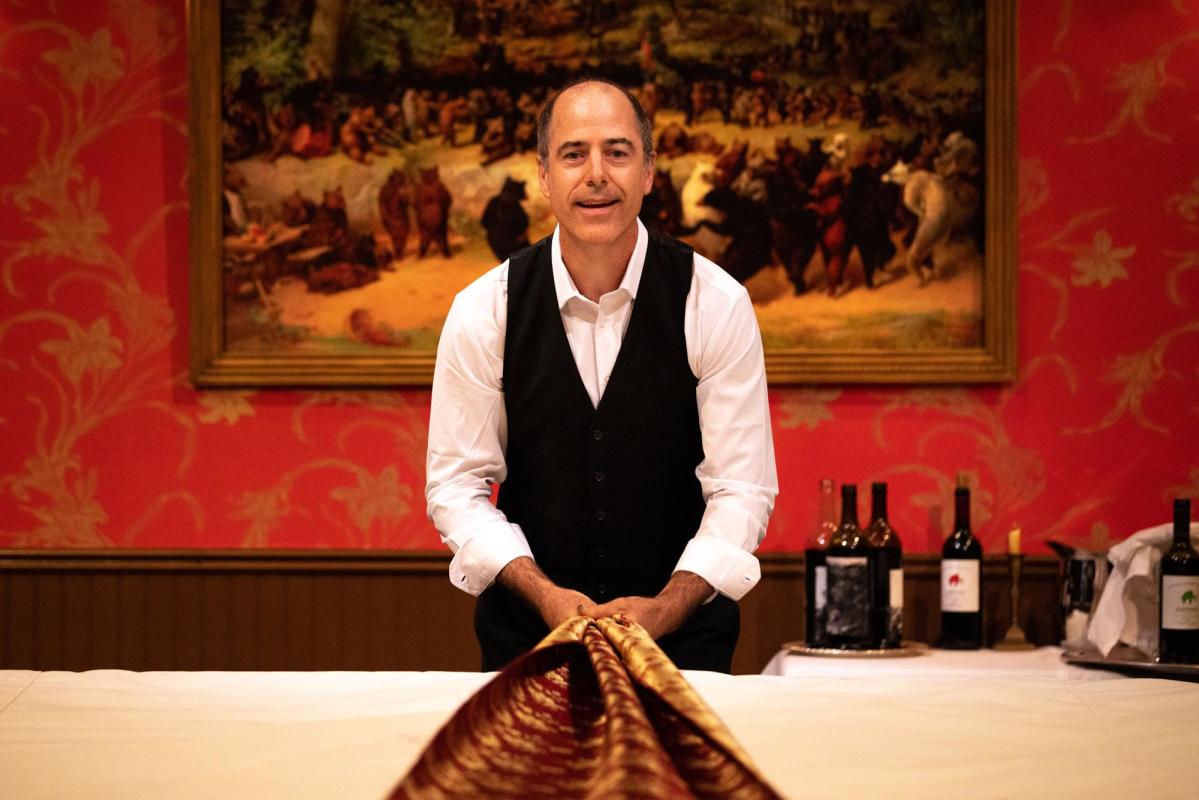Hanging on the wall at the back of FOOD’s set is William Holbrook Beard’s The Bear Dance. This painting replaces people with animals in order to satirise human tradition, routine, and behaviour. It is a fitting backdrop therefore for Geoff Sobelle’s absurd, experimental take on our love affair with consumption. Sobelle transforms fancy into farce, stripping bare the rituals and traditions of what we eat and serving them on a silver platter.
Right from the beginning of FOOD, with a half-parody of hypnosis shows, Sobelle generates a heightened sensory experience. By attuning the audience to a range of sights, smells, and tastes, Sobelle is able to land the gags with even greater impact. A rogue fish threatens to steal the show, and a particularly grotesque sequence where the formalities of dining are cast aside proves to be the comedic highlight.
FOOD uses its traverse staging for selective communication, using the at times restricted views of the audience to its advantage and leading to an entertaining range of reactions. Meanwhile, the front row are all sat around a giant table that doubles as a stage, which feels about as comforting as being invited round for dinner by Hannibal Lecter. Sobelle treats audience members as dinner guests in an increasingly bizarre round of food-themed set pieces. It proves to be an effective introduction to a surprisingly profound, quiet final act where the history of food and civilisation is played out in miniature form. While the changes in pace don’t always prove the most attentive, they can be fascinating.
If tables could take a bow, then the one in FOOD certainly should have. It is at once a prop, a mechanism, a stage, and a character all in itself. Sobelle’s inspired touch turns the table into a playground of ideas and foolery, complete with small flourishes of magic. It rarely ceases to amaze you what one man and a giant wooden square on legs are capable of when put together. Such a bare-bones approach is a perfect playground for Sobelle, allowing for a variety of physical and comical scenarios to ensue.
The changes in tone occasionally trigger reactions of confusion rather than admiration, but unpicking the strangeness is part of FOOD’s appeal. A weird and wonderful dive into the history and culture of eating, FOOD is more than a morsel; It’s a three course dinner of delights.
